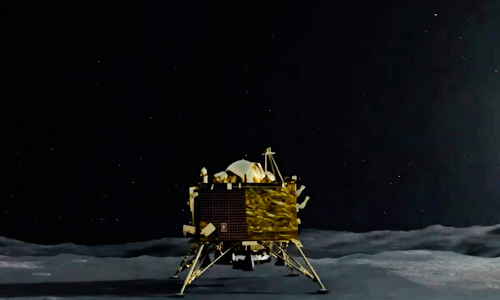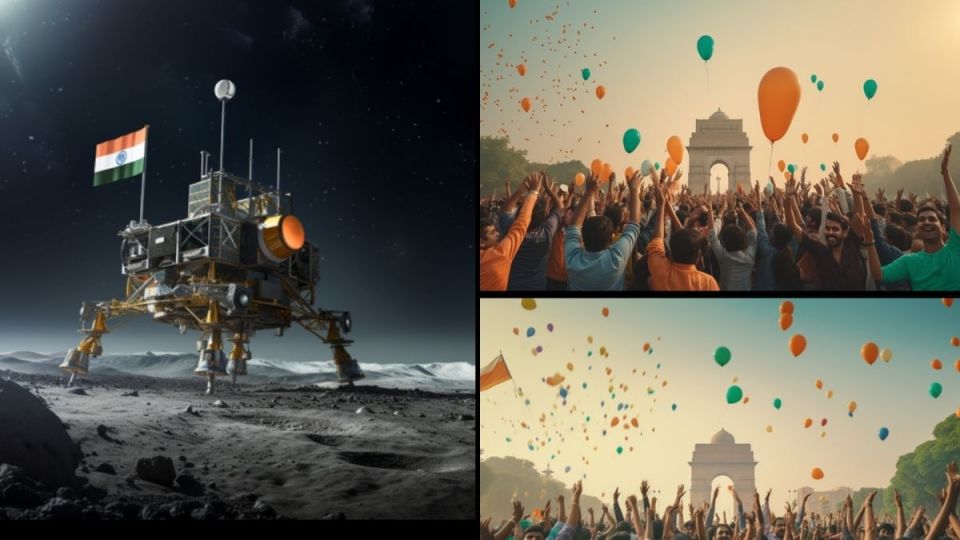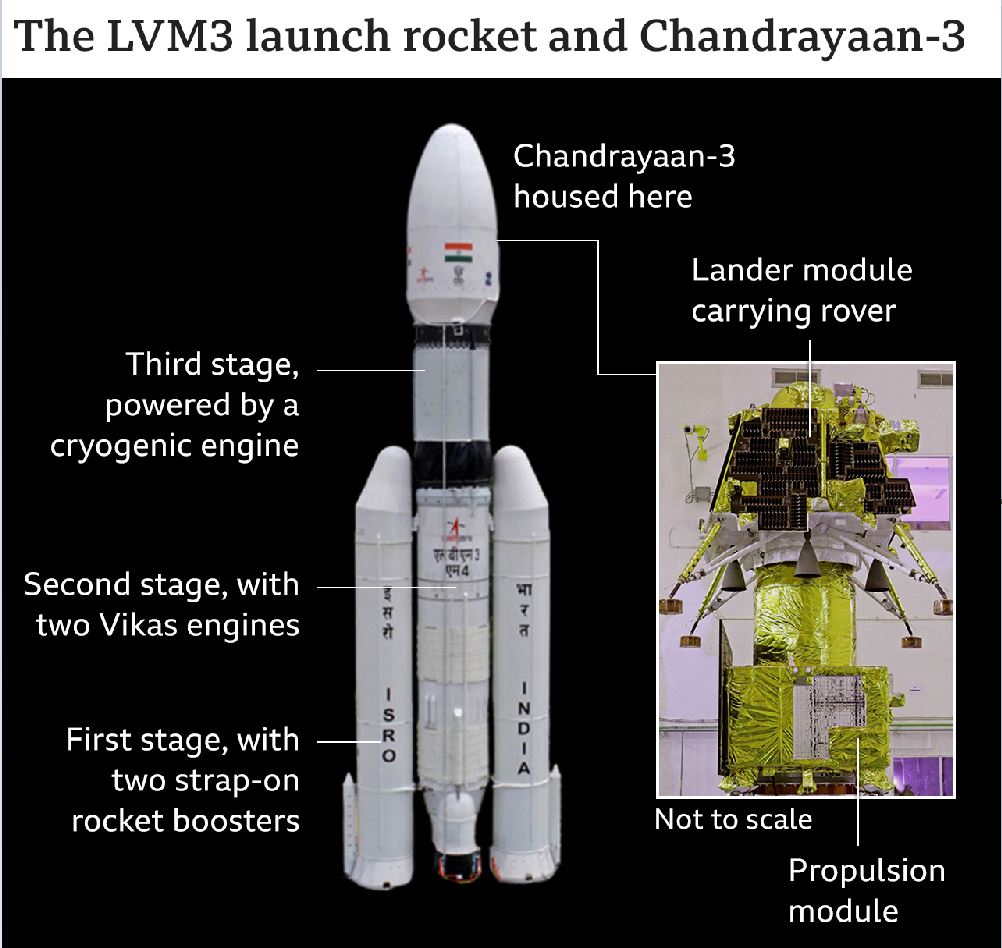
Kathmandu, Aug 24: ISRO(Indian Space Research Organisation) confirmed that Chandrayaan-3 landed softly on moon at 8:34 am EDT (6:04 pm India Standard Time),on Thursday.
August 23, 2023, becomes a historically significant day for space exploration as with Chandrayaan-3 landing on moon surface makes India the fourth nation to successfully touch the lunar surface after United States, Soviet Union and China.
The flawless soft landing makes Chandrayaan-3 the first spacecraft to touch down on the moon’s south polar region with which it fulfills first of it's objectives among three.

India has become the first country to land a spacecraft on the lunar's unchartered territory of south pole — a region probably containing water ice and valuable minerals.
Chandrayaan-3 is powered by solar panels and is designed to last a single lunar day which is equivalent to 14 days on earth. So time for this space craft is a topic of challenge. It needs to conduct series of experiments.
While Luna-25 Russian aircraft was designed to sustain one earth year Chandrayaan-3 will not survive even a lunar night.
It has instruments designed to study the lunar regolith;the layer of unconsolidated solid material covering the bedrock of a planet, and immediate exosphere, water and minerals, including Helium3.
Prime Minister Narendra Modi on Wednesday dialled ISRO chairman S Somanath after the success of Chandrayaan-3 mission.
Russian President Putin congratulates India; says Chandrayaan-3's successful landing shows its impressive progress in science & technology.
Details of Chandrayaan-3 authorized by ISRO:
Chandrayaan-3 consists of Lander and Rover configuration. It was launched by LVM3 from SDSC SHAR, Sriharikota. The propulsion module carried the lander and rover configuration till 100 km lunar orbit. The propulsion module has Spectro-polarimetry of Habitable Planet Earth (SHAPE) payload to study the spectral and Polari metric measurements of Earth from the lunar orbit.
Lander payloads: Chandra’s Surface Thermophysical Experiment (ChaSTE) to measure the thermal conductivity and temperature; Instrument for Lunar Seismic Activity (ILSA) for measuring the seismicity around the landing site; Langmuir Probe (LP) to estimate the plasma density and its variations. A passive Laser Retroreflector Array from NASA is accommodated for lunar laser ranging studies.
Rover payloads: Alpha Particle X-ray Spectrometer (APXS) and Laser Induced Breakdown Spectroscope (LIBS) for deriving the elemental composition in the vicinity of landing site. Chandrayaan-3 consists of an indigenous Lander module (LM), Propulsion module (PM) and a Rover with an objective of developing and demonstrating new technologies required for Inter planetary missions.
The mission objectives of Chandrayaan-3 are:
To demonstrate Safe and Soft Landing on Lunar Surface
To demonstrate Rover roving on the moon and
To conduct in-situ scientific experiments













